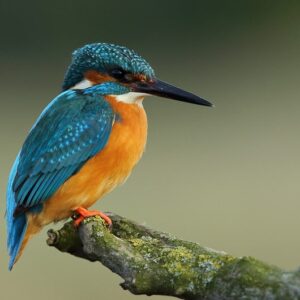
Washington State is home to some of the most venomous spiders, including the Black Widows. So, if spiders freak you out, you’re likely to have a hard time in Washington. But you can prepare yourself accordingly when you know the types of spiders you’re likely to find in Washington. So, what are the most common spiders in Washington State?
6 Common Types of Spiders in Washington
As mentioned above, Washington DC is home to a wide range of spiders, some of which are extremely venomous. However, not all venomous spiders are harmful. That’s why you need to know the various types of spiders you’ll encounter in Washington so that you can prepare yourself accordingly.
Although spiders are terrifying, they’re quite interesting and beneficial to our environment. For instance, spiders can help you to control insects in your house and farm. Here are the most common spiders in Washington State.
1. Black Widow

Image source: Pinterest
This is the most venomous spider in Washington. It’s a shiny black spider with a unique red mark with a shape of an hourglass. Some black widow spiders have a row of red spots above the distinctive red mark, which is common in female black widows.
Male black widows have longer legs and are smaller in size than their female counterparts. Female black widow spiders are between 6.35 mm and 9.5 mm long while male black widows are between 3.15 mm and 4.5 mm long. Additionally, the black widow spider is perhaps the most recognizable spider all over the world.
It’s very hard not to recognize the distinctive red mark that looks like an hourglass. Another notable thing about black widows is that their venom is 15 times stronger than that of a rattlesnake. However, this spider isn’t aggressive.
It’ll only bite you when it feels threatened or in defense. So, avoid disturbing its web if you don’t want to be bitten. Besides, the black widow spider hardly bites humans, unless it’s under attack.
If you’re unlucky and you get bitten by a black widow spider, know that the venom will affect your nervous system. This bite can have a severe effect on your nerves, especially if you don’t take remedial measures immediately. But sometimes it’ll only have a mild effect on you.
Seek immediate medical attention when you’re bitten by a black widow spider, even if you don’t believe the bite is likely to have any serious effect on you. It’s more important to be safe than sorry. If your child is bitten by this spider, the neurotoxic venom is likely to have serious effects on their nerves, which can even be fatal if not treated promptly.
2. Wolf Spider

Image source: Pinterest
A wolf spider is another most recognizable spider, especially in Washington State. But it can be found in almost every habitat. You’re likely to encounter this spider when you flip a rock or log.
There are numerous individual species of wolf spiders. Most of these species look almost identical. One of its unique traits is the fact that it doesn’t make webs to trap insects.
It’s one of the few spiders in the world that literally chase down their prey. They simply wait for the prey to walk in their way and pounce on it. Some species of wolf spiders make burrows and wait inside for their prey to walk in.
This spider is also known to have incredible eyesight. Its eyes have retro-reflective tissue that produces a glow when you flash a light at its face. The spider can bite you if you provoke it, but its venom isn’t dangerous.
The bite will only cause mild symptoms that’ll go away after a while, even without any medical assistance. Some of the common symptoms of a bite by a wolf spider include itching, mild pain around the site of the bite, and swelling. If these symptoms persist, seek medical advice.
3. Crab Spider

Image source: Pinterest
Crab spiders are commonly found around flowers. So, if you have flower pots in your house or a flower garden in your backyard, you’re likely to find crab spiders. There are many species of crab spiders in Washington.
These species have varying colors, including yellow, green, brown, white, and pink. Male crab spiders are smaller than their female counterparts. Female crab spiders grow up to 7-11 mm long while their male counterparts grow up to 2-4 mm long.
Like wolf spiders, crab spiders don’t create webs to catch prey. They just sit and wait for insects to walk by and pounce on them or chase them down. They also hide inside flowers or low-lying vegetation waiting for prey.
With their long forelegs, crab spiders can easily and swiftly ambush prey and make a quick kill. This spider can also feed on pollen and nectar from flowers, especially during harsh weather when there are no insects around. Through their mutualistic relationship with plants, crab spiders help to keep insects away from plants, allowing them to thrive.
So, if your flower garden is under insect attack and you don’t want to use insecticides, you can rely on crab spiders to control the insects. Some plants produce fragrant when attacked by insects to attract crab spiders that feed on the insects.
4. Cellar Spider

Image source: Pinterest
You’re likely to find cellar spiders in your basement and other dark corners of your house. This spider has several distinctive traits that you can’t fail to notice. For instance, its head (cephalothorax) and abdomen have different shades of brown.
Its body, which looks like a peanut, is less than 12.7 mm long while its legs are 51 mm long. Some species of cellar spiders have up to 8 eyes, while others have 6 eyes. A cellar spider is a long, thin, and subtle arachnid.
When you vacuum your basement you’ll most likely find several cellar spiders hiding in there. This spider vibrates when its web is disturbed or catches large prey. This behavior has led some people to refer to cellar spiders as “vibrating spiders.”
This reaction is meant to scare away predators and improve their chances of catching prey. Another notable thing about cellar spiders is that they hunt and kill venomous spiders. So, if you find venomous spiders in your house, you can introduce cellar spiders to hunt them down and eliminate them.
5. Daring Jumping Spiders

Image source: Pinterest
Also referred to as bold jumping spiders, daring jumping spiders are very common in Washington State. This spider has 8 eyes, with two of them appearing to be more prominent than others. It also has green metallic fangs.
Daring jumping spiders grow between 4 and 14 mm long and have black and white marks on their legs and abdomen. Some species have orange markings on their abdomen, especially when they’re young. But as they grow older, these markings turn white.
The term “jumping” spider comes from its ability to jump high and long distances, about 50 times their body length. It’s a tiny spider that’s almost the same size as a tarantula. The daring jumper is a hunting spider that prefers to hunt in open spaces where it can hunt down its prey.
This spider doesn’t make webs to catch prey, but to protect their egg sacs and rest on at night. They also use one strand of their web as a lifeline when they’re hunting prey. This strand will serve as their bungee cord in case the jump fails.
You can find these daring jumpers in your backyard and fields with grass. They’re also common on perimeter walls, fences, and other outdoor structures. Jumping spiders love flat spaces where they can look downward for faster and more effective jumps when hunting prey.
6. Black and Yellow Garden Spiders

Image source: Pinterest
These spiders are also referred to as Yellow Garden spiders. Both male and female black and yellow garden spiders have light-gray heads. Male black and yellow garden spiders are smaller than their female counterparts.
A male spider grows up to 6.3mm long while its female counterpart grows up to 25mm long. The female’s abdomen features a wide black marking in the middle and on the sides, as well as yellow patches. Parts of their legs near their bodies are orange or dark yellow and turn black as they progress to the end.
This spider makes a beautiful web with a unique circular shape that’s 2ft wide. You’ll find this spider in sunny, open spaces or gardens. Unlike other species of spiders, the black and yellow garden spider makes its web during the day.
How to Get Rid of Spiders

Image source: Pinterest
Although not all spiders have dangerous venom, it’s quite normal for people to freak out when they come across a spider. If you live in Washington or you’re planning to travel there soon, you’re going to encounter various species of spiders, some of which are dangerous and others completely harmless.
But whether the spiders you encounter are dangerous or not, you probably won’t enjoy sharing your house with them. Ignoring them for even a few days will be enough time for them to multiply and become a menace in your house. So, you need to get rid of them as soon as possible.
This is why you need to learn how to get rid of spiders from your space immediately. Here are some effective tips on how to eliminate spiders quickly.
1. Setting Spider Traps
You can now buy or build your own spider traps. These traps come with sticky glue that helps to catch and kill spiders. Once you get these traps, identify areas in your house with high traffic of spiders and place them strategically in these areas.
These traps are readily available in garden stores and over the counter. Keep them far from your pets and children. Also, check and replace them regularly so that they can continue to catch spiders.
2. Get Rid of Spider Webs
Don’t allow spider webs to stay in your house for a long time because it encourages more spiders to inhabit your space. You can use your vacuum to remove the webs. Make sure you do this regularly, or as soon as you discover a spider web in your space.
3. Install Screens
Since you can’t live in a house with permanently closed doors and windows, you should install screens that will prevent insects and pests from invading your house when you open your doors and windows. Make sure the screens don’t have holes that can allow spiders into your house.
4. Light Up Your Interior Space
Spiders prefer to hide in concealed and dark spaces where they can thrive without any disturbance. That’s why you need to light up your space, especially your basement, store, and garage. You should also install lighting in your attic and inspect it regularly for spider webs.
5. Use Vinegar and Peppermint Oil
If you don’t want to use pesticides to get rid of spiders in your house, use safe alternatives like vinegar and peppermint oil. Both options are effective spider repellents. Just spray them in areas you suspect have spiders. Remember to reapply them regularly to keep spiders away.


